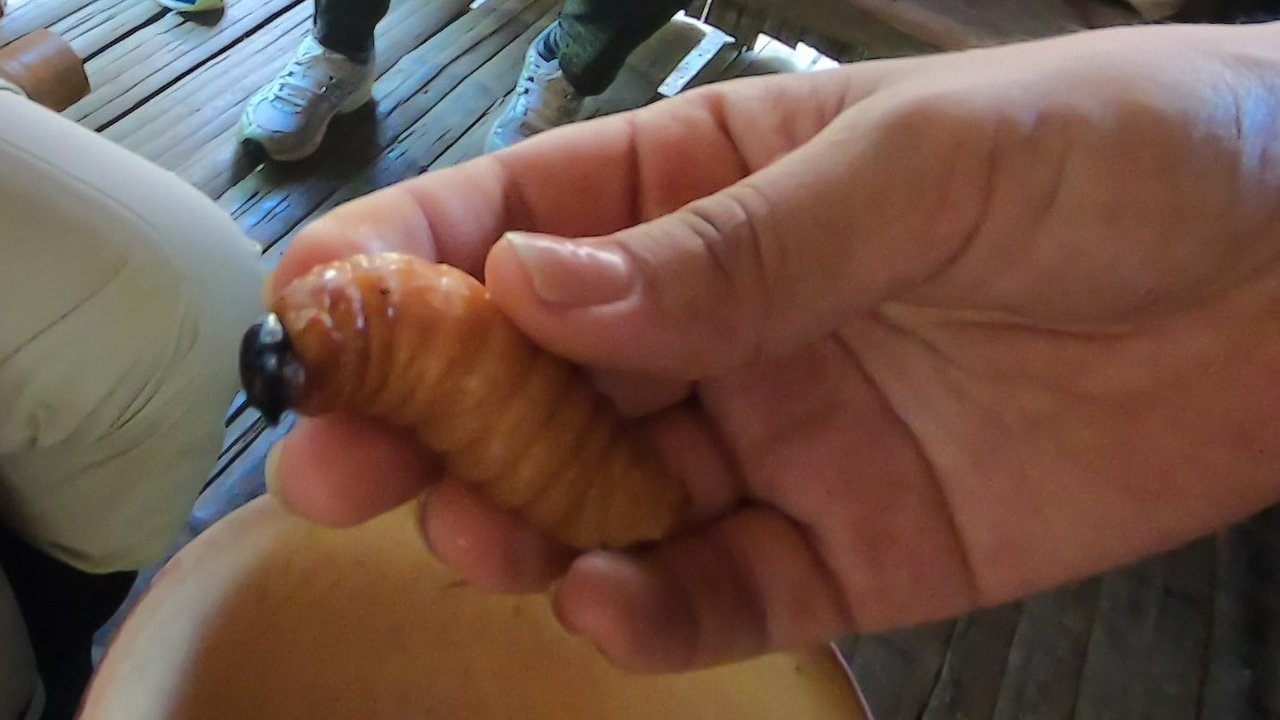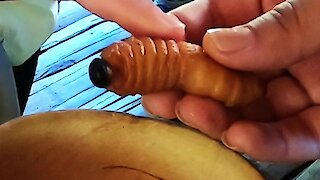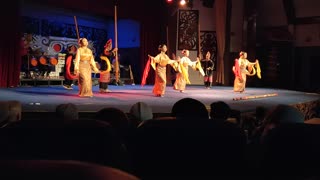Premium Only Content

Guests at traditional Amazon village eat monster grubs
Chontacuro grubs are enormous larvae of a weevil that burrows into palma trees in the Amazon basin, in Ecuador, Colombia, Peru and Brazil. They get their name from the Kichwa words “Chonta” for the palma tree that they inhabit and feast on, and the word “curo” which means worm. Several indigenous tribes along the rivers consider them a staple part of their diet, and even a delicacy. They are valued for their nutritional properties, adding a generous portion of protein and fat to a diet that is high in vegetables and fruits. Aboriginal peoples believe that chontacuro have healing properties, curing infections, asthma, gastritis, and arthritis.
Ecotourists on a visit to a traditional village were given a rare and educational insight into the culture of the indigenous people. Margot and Erika demonstrated methods of farming, fabrication, and food preparation, including the famous chontacuro grub. They explained how the palma trees are farmed to yield fruit, chontaduro until the trees reach four years of age. The fruit is less edible at this point and the trees are cut down. The trunks are left on the ground, an invitation for the enormous black chontacuro beetles to come and lay their eggs inside. After four months, the trunks are hollow inside. They are cut open to harvest more than 40 grubs each which will have grown to 5-8cm in length (3 inches). The hollowed trunks are then used for construction of huts and other structures.
Margot and Erika offered the raw grubs to the Canadian tourists and gave them a close look at the wriggling insects. Not surprisingly, the Canadians politely requested the cooked version, choosing grilled grubs from wooden skewers that had been cooking on the fire in the hut. The cooked grubs resemble pale shrimp kebabs. The grubs have a tough rubbery exterior that requires serious chewing. The inside holds a greasier texture with a taste similar to shrimp basted with bacon fat. The heads are crunchy and unremarkable in taste. While the overall taste wasn’t as bad as imagined, none of our Canadian friends requested second helpings. Plantains, boiled yucca, and fish were served with the grubs, along with ahi, a spicy salsa type dish that has a very pleasant taste and an impressive level of heat.
Villages like this one welcome tourists for an opportunity to share their culture and learn their ways of sustainable harvest. The villagers also offer the opportunity to purchase unique and beautiful crafts made of locally sourced materials. This mutually beneficial arrangement offers a chance to understand the people and it provides an alternative to the lucrative, but destructive oil mining that would otherwise be necessary. Ecotourism provides a positive and sustainable means of income without displacing indigenous tribes, changing landscapes and destroying habitat.
If you ever get a chance to try a food as unique as the chontacuro grub, why not close your eyes and give it a try?
-
 0:53
0:53
WildCreatures
2 months ago $2.34 earnedDolphins escort whale shark through pack of stunned scuba divers
10.1K6 -
 0:04
0:04
hotsykhotsy
4 years ago $13.73 earnedKid gets completely eaten by the "bedsheet monster"
268K188 -
 0:52
0:52
ViralHog
4 years ago $1.78 earnedMarshmallow Man Faces off With Scary Monster
3.25K14 -
 0:12
0:12
ViralHog
5 years ago $1.03 earnedMan Makes a Monster Splash
1.93K -
 3:10
3:10
AFV
5 years agoAmazon Boxes Delivery Moments
282 -
 1:10
1:10
WildCreatures
5 years ago $0.05 earnedTraditional Amazon village serves tourists giant grubs for snack
3.52K1 -
 2:08
2:08
jasmine1992
4 years ago $0.23 earnedSarawak Cultural Village: Mixed Ethnicity Traditional Dance (Malaysia)
215 -
 3:26
3:26
jasmine1992
4 years agoSarawak Cultural Village: Melanau Traditional Dance (Cuti Cuti Malaysia)
27 -
 1:23:33
1:23:33
Steve-O's Wild Ride! Podcast
2 days ago $12.32 earnedRainn Wilson and Steve-O Break The Silence On Their Long Friendship | Wild Ride #263
26.3K15 -
 42:40
42:40
The Brett Cooper Show
2 days ago $15.81 earnedWhy Are We Attacking Travis Kelce and Theo Von? | Episode 57
39.4K92